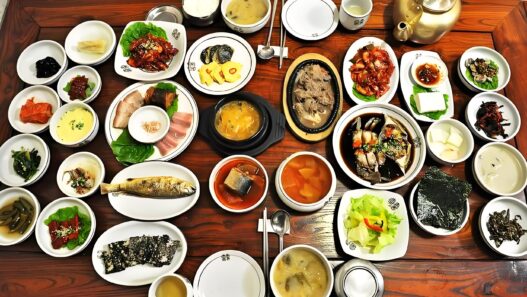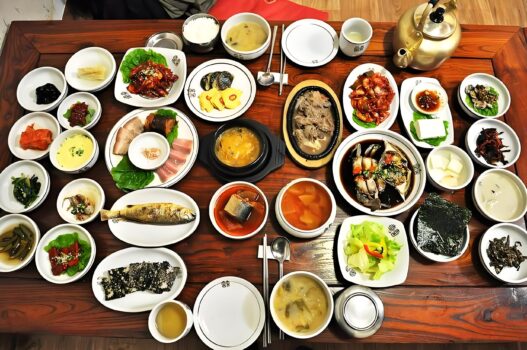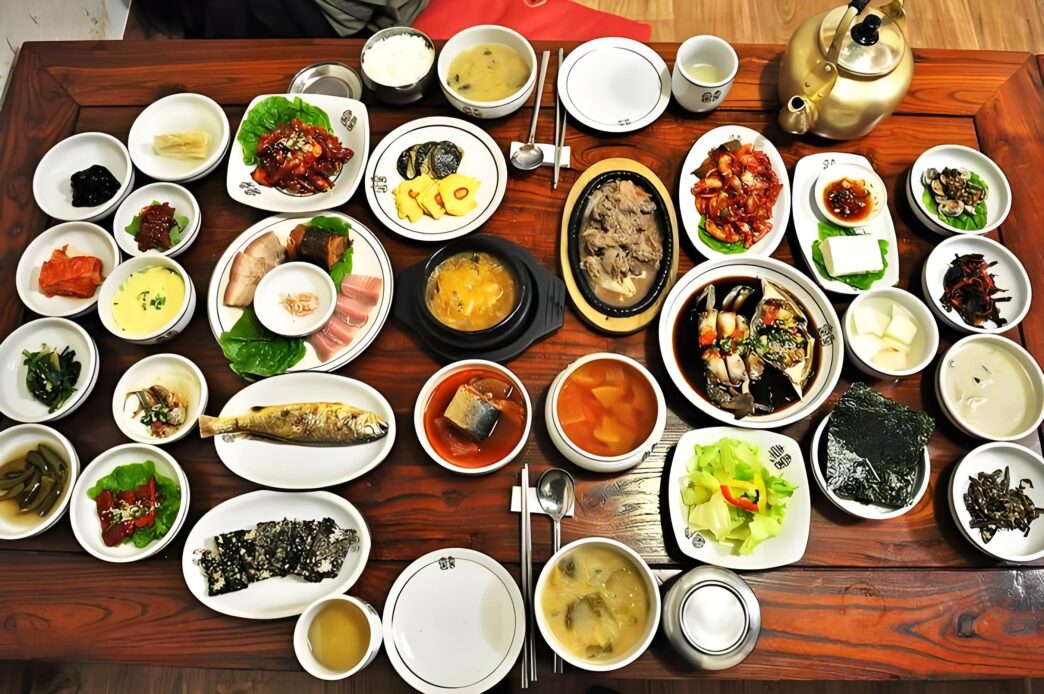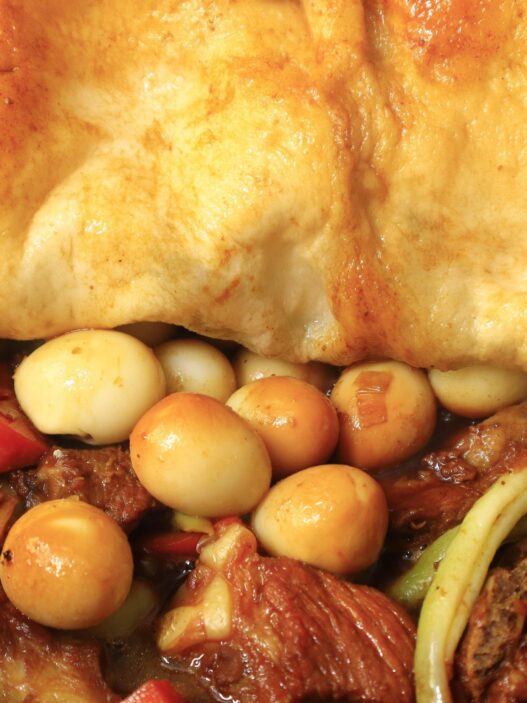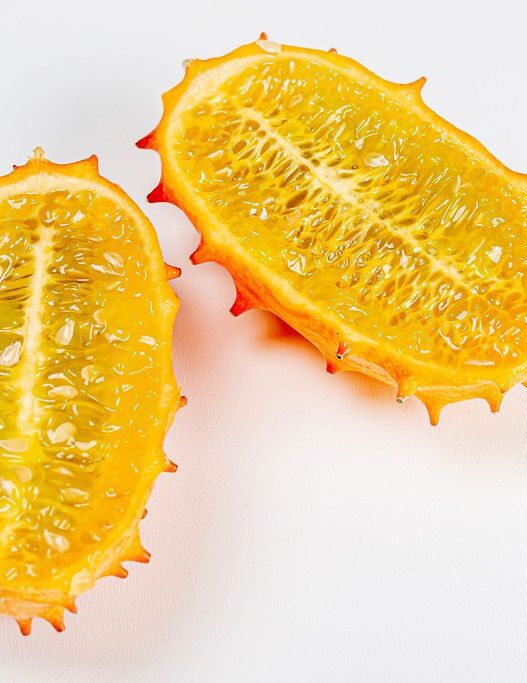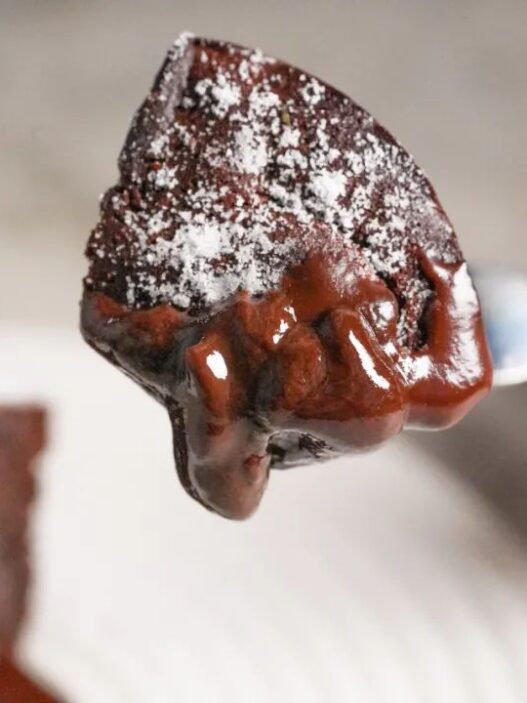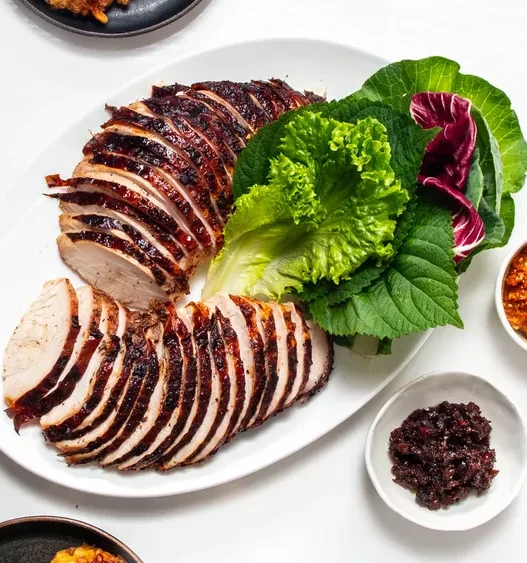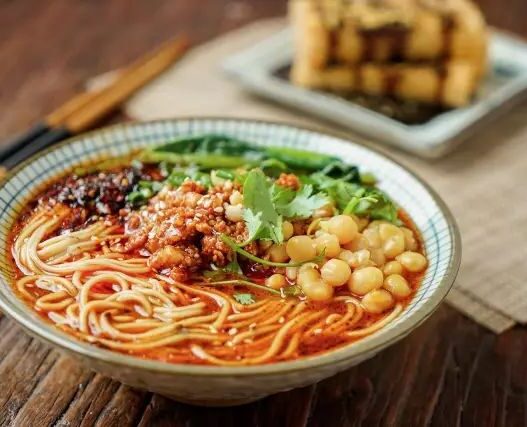Without Korean kimchi, it’s not a proper meal!” – this heartfelt declaration resonates in every Korean household. My Korean friends confess they feel physically uneasy if a day passes without tasting that familiar tangy kick of Korean kimchi. Government statistics reveal astonishing numbers about this national obsession:

- 95% of Koreans consume kimchi daily
- Average annual consumption reaches 35kg per person (that’s the weight of a medium-sized dog!)
- Most families invest in specialized kimchi refrigerators (often multiple) to maintain perfect fermentation conditions


Even celebrities aren’t immune to this obsession. Actress Jung Ryeo-won’s appearance on I Live Alone showcased her winter kimchi-making ritual, where she admitted: “I even finish the complimentary kimchi at restaurants – it’s too precious to waste.”
From Humble Preservation to Cultural Treasure
A Historical Necessity
Korea’s tumultuous relationship with kimchi began as a matter of survival:
- Three Kingdoms Period (57 BC–668 AD): Early records of fermented vegetables
- Joseon Dynasty (1392–1897): Chili peppers introduced via Portuguese traders, revolutionizing flavors
- 2013: UNESCO recognizes kimjang (kimchi-making) as Intangible Cultural Heritage
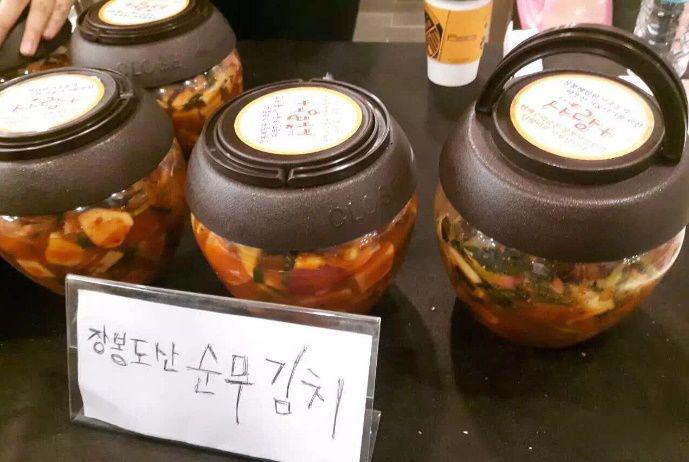
The Modern Kimchi Pantheon
While napa cabbage kimchi (baechu-kimchi) remains the undisputed queen, devotees worship at the altar of many varieties:
1、Kkakdugi (깍두기): The people’s choice – crunchy radish cubes with a garlicky punch
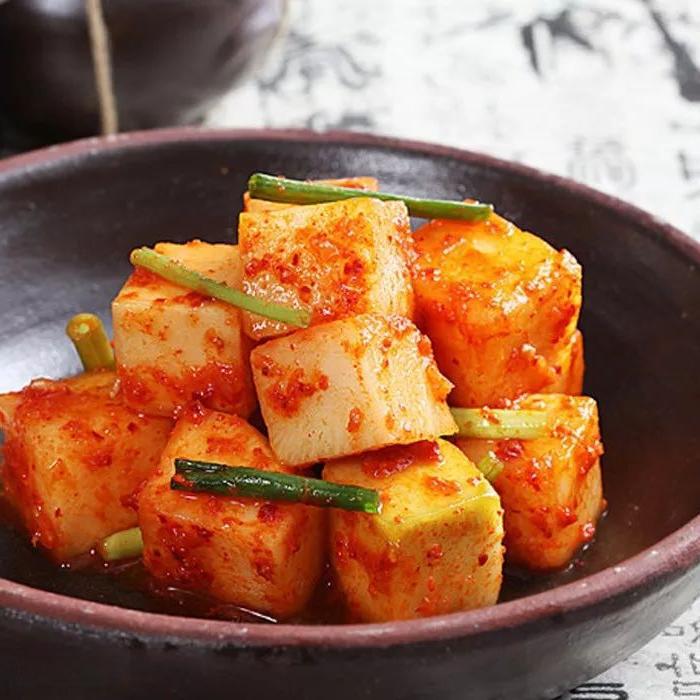
2、Oi-sobagi (오이소박이): Cucumbers stuffed with spicy seafood paste – the ultimate summer snack
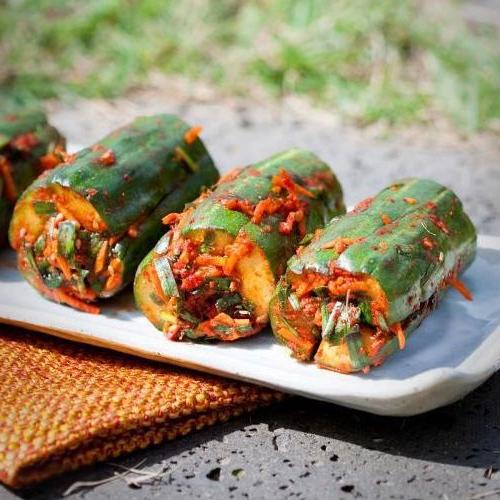
3、Chive Kimchi (부추김치): Mustard leaf kimchi with a sinus-clearing intensity
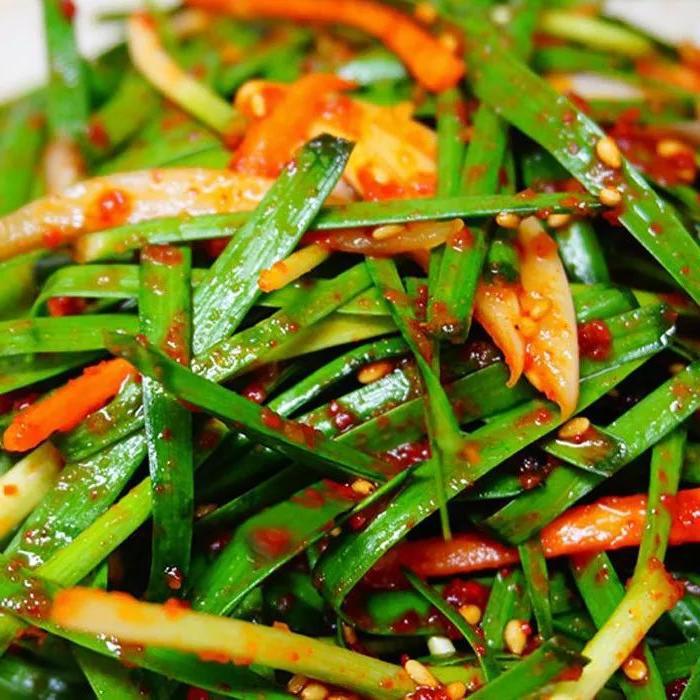
The Sacred Rituals of Kimchi Consumption
Daily Devotions
- Breakfast: Steamed rice wrapped in cold, crisp kimchi leaves – the ultimate comfort
- Lunchboxes: Kimchi fried rice stained crimson with fermented goodness
- Rainy day therapy: Pajeon (savory pancakes) dipped in kimchi juice-spiked soy sauce

Ceremonial Occasions
- Samgyeopsal nights: Pork belly and kimchi sizzling together on the grill
- Budae-jjigae: “Army stew” where aged kimchi forms the flavor foundation
- Kimchi-jjigae: The ultimate soul food – bubbling cauldrons of fermented cabbage and tofu
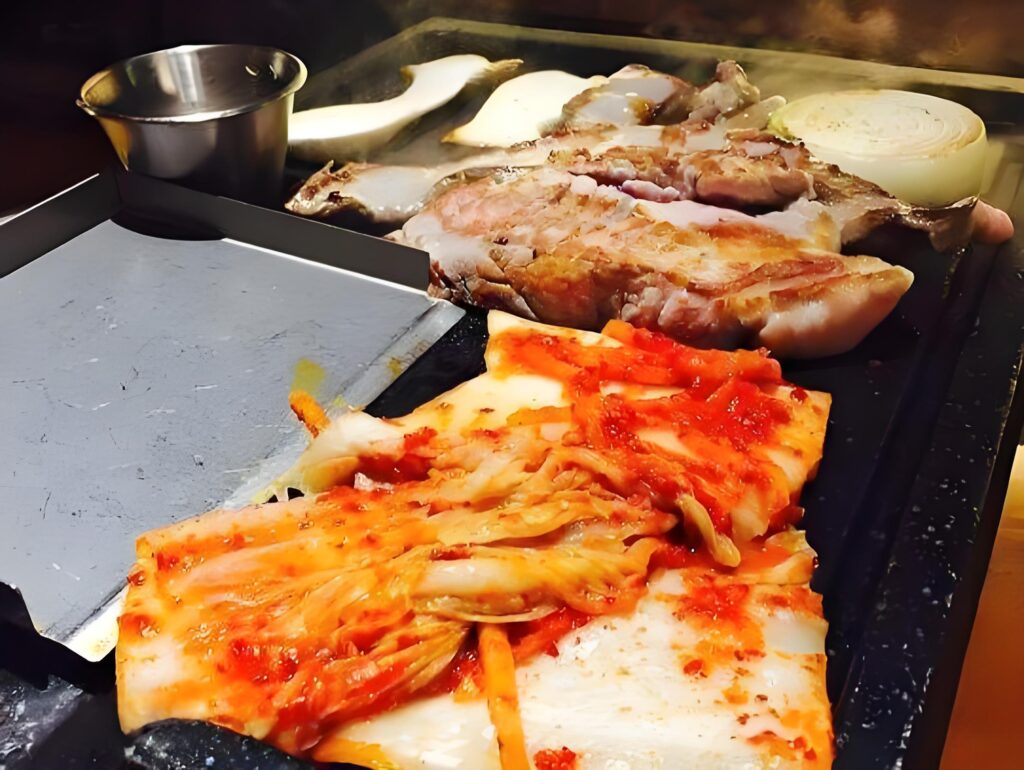

Wisdom from Kimchi Masters
After years of observation and countless failed fermentation attempts, I’ve compiled sacred knowledge:
- The Aging Paradox: 3-week fermented kimchi makes perfect stews, while fresh batches shine in wraps
- Temperature Doctrine: 4°C maintains ideal fermentation speed
- Spice Alchemy: Authentic gochugaru (Korean chili flakes) delivers the perfect slow-building heat
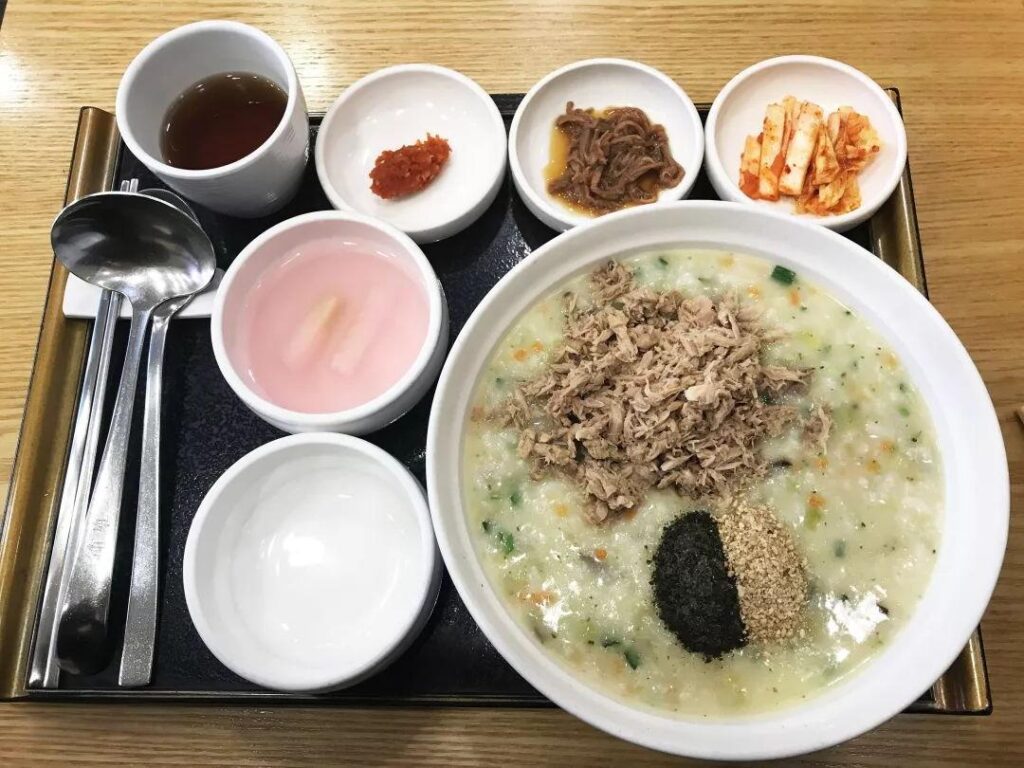
Why This Matters
Kimchi isn’t merely food – it’s edible anthropology. Each batch tells stories of harsh winters overcome, of families gathered around fermentation jars, of a nation’s unbreakable bond with its microbial allies.
Ready to begin your kimchi education? Your taste buds – and gut health – will never be the same! 🥢🔥






